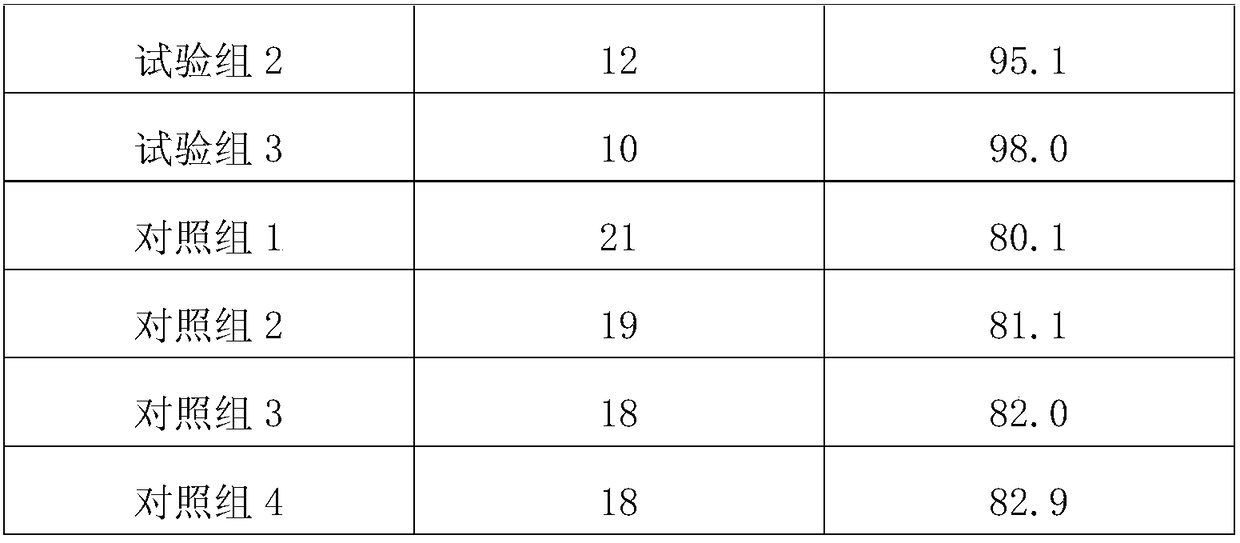Grafting method of chilies
A technology for peppers and scion seedlings, applied in grafting, botany equipment and methods, chemicals for biological control, etc., can solve the problem of ineffective wound healing agents, easy to be washed away by rain, slow wound healing, etc. problems, to achieve the effect of solving wound susceptibility to infection, improving plant cell viability, and speeding up wound healing
- Summary
- Abstract
- Description
- Claims
- Application Information
AI Technical Summary
Problems solved by technology
Method used
Image
Examples
Embodiment 1
[0017] The grafting method of pepper in this embodiment includes rootstock cultivation, scion selection, grafting, and post-grafting management. The grafting uses wild selected peppers with high resistance to soil-borne diseases as the rootstock and conventional varieties of pepper as the scion for grafting; The rootstock seedling grows 5 true leaves, and the scion seedling grows 6 true leaves. Grafting begins. When grafting, first use a blade to cut the rootstock seedling's second true leaf crosswise to remove the axillary buds to make a smooth incision. According to the smooth incision, cut a 0.5cm deep blade vertically from top to bottom, and then select a strong scion seedling, cut off the branches at the 4th true leaf of the scion seedling, cut off part of the leaves of the branch, and keep 2 true leaves, and The incision is cut into a wedge shape equal to the size of the cutting edge of the rootstock, and then the scion is inserted into the incision of the rootstock, so th...
Embodiment 2
[0021] The grafting method of pepper in this embodiment includes rootstock cultivation, scion selection, grafting, and post-grafting management. The grafting uses wild selected peppers with high resistance to soil-borne diseases as the rootstock and conventional varieties of pepper as the scion for grafting; When the rootstock seedling grows 6 true leaves and the scion seedling grows 8 true leaves, start grafting. When grafting, first use a blade to cut across the top of the 3rd true leaf of the rootstock seedling to remove the axillary buds and make a smooth incision. According to the smooth incision, cut a 1cm deep knife edge vertically from top to bottom, and then select a strong scion seedling, cut off the branches at the 5th true leaf of the scion seedling, cut off part of the leaves of the branch, and save 3 true leaves, and cut Cut into a wedge shape with the length of the cutting face equal to the size of the cutting edge of the rootstock, then insert the scion into the ...
Embodiment 3
[0025] The grafting method of pepper in this embodiment includes rootstock cultivation, scion selection, grafting, and post-grafting management. The grafting uses wild selected peppers with high resistance to soil-borne diseases as the rootstock and conventional varieties of pepper as the scion for grafting; When the rootstock seedling grows 6 true leaves and the scion seedling grows 8 true leaves, start grafting. When grafting, first use a blade to cut across the top of the 3rd true leaf of the rootstock seedling to remove the axillary buds and make a smooth incision. According to the smooth incision, cut a 0.8cm deep blade vertically from top to bottom, and then select a strong scion seedling, cut off the branches at the 5th true leaf of the scion seedling, cut off some leaves of the branch, and keep 3 true leaves, and The incision is cut into a wedge shape equal to the size of the cutting edge of the rootstock, and then the scion is inserted into the incision of the rootstock...
PUM
 Login to View More
Login to View More Abstract
Description
Claims
Application Information
 Login to View More
Login to View More - R&D
- Intellectual Property
- Life Sciences
- Materials
- Tech Scout
- Unparalleled Data Quality
- Higher Quality Content
- 60% Fewer Hallucinations
Browse by: Latest US Patents, China's latest patents, Technical Efficacy Thesaurus, Application Domain, Technology Topic, Popular Technical Reports.
© 2025 PatSnap. All rights reserved.Legal|Privacy policy|Modern Slavery Act Transparency Statement|Sitemap|About US| Contact US: help@patsnap.com


